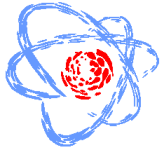Speaker
Ms
Viktoriya Makarchuk
(A. Tsyb Medical Radiological Research Centre - branch of the National Medical Research Radiological Centre of the Ministry of Health of the Russian Federation)
Description
Suppression of the synthesis of the endogenous nitric oxide after injection of NOS-inhibitors is a promising approach to induce radioresistance. Previously we have shown that radioprotective activity of some isothiourea derivatives had a correlation with their NOS-inhibitory activity. In this study we investigated the influence of one of our newly synthesized N,S-substituted derivative of isothiourea with proven NOS-inhibitory activity on recovery from bone marrow syndrome of acute radiation injury.
Materials and methods. In this research we used substance NS23, an N,S-substituted derivative of isothiourea. Male F1 (CBA×C57Bl6j) mice were exposed to gamma-radiation with dose rate 75-80 mGy/s. To investigate radioprotective activity of new substance we used standard radiobiological tests: 30-days survival of mice and survival of their bone marrow clonogenic cells by methods of splenic endo- and exogenous colony formation. Also we estimated the quantity of cells in bone marrow and peripheral blood using the automatic hematology analyzer Abacus Junior Vet (Diatron, Austria).
Results. Using the splenic exogenous colony formation method we showed that injection of NS23 before irradiation facilitated survival of bone marrow clonogenic cells. Statistically significant radioprotective effect was observed when NS23 was used at dose 1/8 LD16 (40 mg/kg), at dose 1/4 LD16 (75 mg/kg) the effect reached the maximum level and then, when NS23 was used at higher doses, its radioprotective effect remained virtually unchanged. The results of this study allowed to consider the dose 75 mg/kg of NS23 as optimal radioprotective dose for this animal species.
Using the splenic endogenous colony formation method we studied the duration of the radioprotective effect. Statistically significant increase of clonogenic cell survival was observed so far in five minutes after NS23 administration, then radioprotective effect reached the maximum and was stable within an hour after injection. Although after an hour we observed some decline in the efficacy of NS23, nevertheless statistically significant radioprotective effect persisted for at least two hours.
Thus, NS23 protected from radiation bone marrow clonogenic cells. It allowed us to expect that this substance had an effect on hemapoietic recovery after irradiation. At the same time many authors demonstrated the enhancement of migration and proliferative activity of hemapoietic clonogenic cells by NOS-inhibitors. Certainly all of this affects influenced the quantitative structure of peripheral blood of irradiated mice. When 75 mg/kg of NS23 had been used at 30 min before irradiation the severity of pancytopenia and manifestations of hemodepression were much less intensive than in control animals.
Attenuation of radiation-induced hematopoietic changes by NS23 made this substance responsible for protection animals against radiation death. In our study we showed that this NOS-inhibitor protected no less than 90% mice irradiated with 9 Gy and wasn't inferior to the effectiveness of cystamine. Dose modification factor for NS23 was determined by different methods in independent experiments and amounted to 1,44 (1,26 ÷ 1,65) in 30-day survival test; 1,81 (1,29 ÷ 2,38) and 1,56 (1,21 ÷ 1,94) in exogenous splenic colony formation test.
Summary. As a result NS23 strongly protected bone marrow clonogenic cells from radiation. It allowed this NOS-inhibitor to weaken radiation-induced hemapoietic disorders and largely ensure the survival of irradiated at medullary dose range animals.
According to existing criteria of pharmacological selecting of potential radioprotective agents substance NS23 is definitely promising for further development. Carrying out its preclinical studies as emergency radioprotector seems quite appropriate.
Authors
Dr
Liudmila Shevchenko
(A. Tsyb Medical Radiological Research Centre - branch of the National Medical Research Radiological Centre of the Ministry of Health of the Russian Federation)
Dr
Marina Filimonova
(A. Tsyb Medical Radiological Research Centre - branch of the National Medical Research Radiological Centre of the Ministry of Health of the Russian Federation)
Dr
Olga Izmest’eva
(A. Tsyb Medical Radiological Research Centre - branch of the National Medical Research Radiological Centre of the Ministry of Health of the Russian Federation)
Ms
Viktoriya Makarchuk
(A. Tsyb Medical Radiological Research Centre - branch of the National Medical Research Radiological Centre of the Ministry of Health of the Russian Federation)
Co-authors
Mr
Alexander Filimonov
(A. Tsyb Medical Radiological Research Centre - branch of the National Medical Research Radiological Centre of the Ministry of Health of the Russian Federation)
Ms
Alina Samsonova
(A. Tsyb Medical Radiological Research Centre - branch of the National Medical Research Radiological Centre of the Ministry of Health of the Russian Federation)
Ms
Ekaterina Chesnakova
(A. Tsyb MRRC - branch of the National Medical Research Radiological Centre of the Ministry of Health of the Russian Federation)
Ms
Tatiana Korneeva
(A. Tsyb Medical Radiological Research Centre - branch of the National Medical Research Radiological Centre of the Ministry of Health of the Russian Federation)

